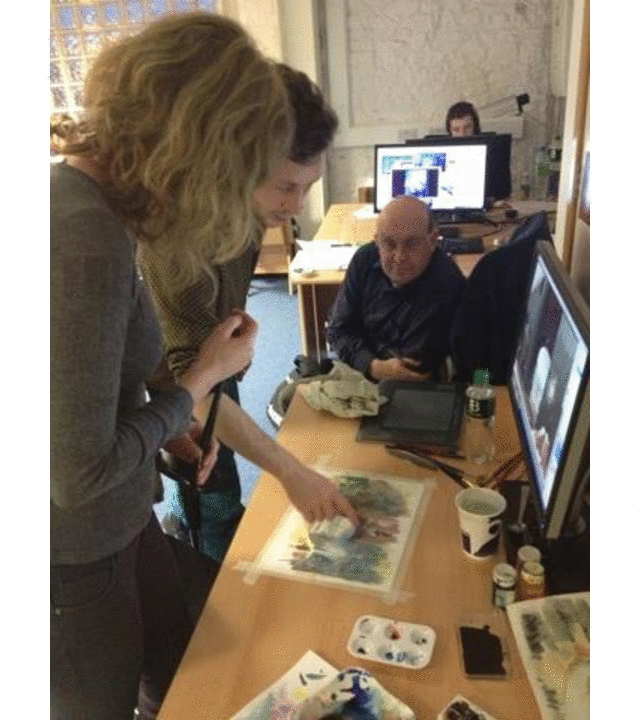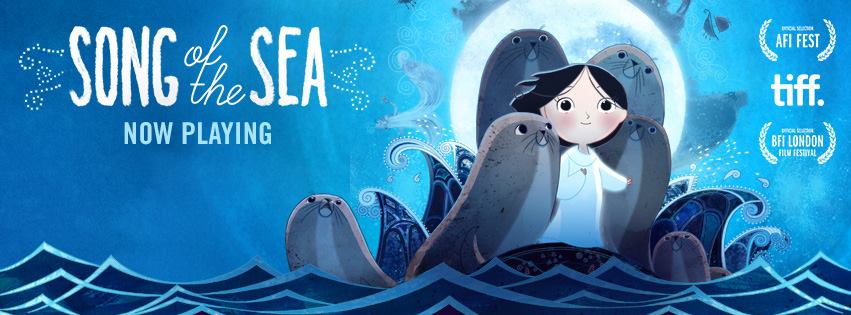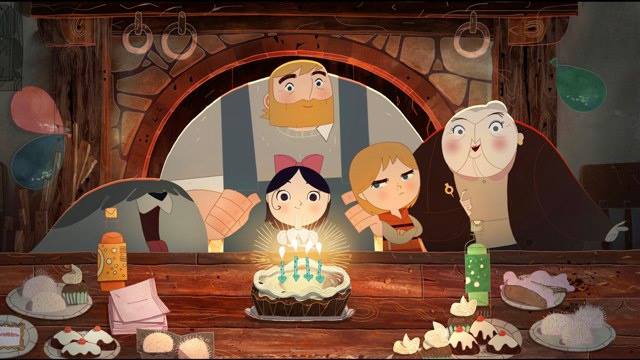When the Academy Award nominations for 2015 were revealed, it was an encore for Ireland based The Cartoon Saloon (TCS) when its movie Song of the Sea (SOTS) got selected in the Animated Feature Film category. Five years ago, the studio’s earlier movie The Secret of Kells also got nominated, though it didn’t win.
At a time when 3D animated movies are on the rise, it’s inspiring for animators to know that 2D is very much here to stay, reason being: this time two movies getting picked by the Oscar committee, SOTS and Studio Ghibli’s The Tale of Princess Kaguya. “It’s funny we managed to clinch a spot considering we had a smaller budget and team compared to the other movies nominated. It means a lot in terms of endorsement because this shows the Academy takes us seriously and not just as a small studio out of Ireland,” says The Cartoon Saloon co-founder and creative director Tomm Moore to AnimationXpress.com.

For someone who personally loves 2D animation, SOTS was the culmination of an incident that occurred to him and his son while at a family holiday. The outcome was a hand drawn animation that took over seven years to complete and 200 people contributing to its production. “I got the idea for Song of the Sea while working on The Secret of Kells. We still like to draw on paper so it made sense that the style stayed organic. I believe that traditional animation is timeless and you can connect with movies that are 30 or even 50 years old,” he reveals.
SOTS had several studios working on it. TCS took care of the storyboarding and character design with 40 people. The animation was done by TCS, Noerlum in Denmark and Melusine Productions in Luxembourg. Belgium’s The Big Farm worked on the compositing, colour, ink and paint, while sound design was done in France by Superprod. Even though Tomm had worked with the studios before, work on music began right in the beginning as it was important to get the music right for the film.
Before sitting down to work, primary artists from the other countries made a trip to Ireland and together they took trips around the country for inspiration. Tomm had his work cut out for himself as he had to hop from studio to studio along with his supervisors and assistant directors every two weeks; much of which was spent in Belgium for the final compositing. The entire process was made easy with the use of the Danish software Hobsoft and 2D animation done on French software TVPaint.

“The purpose to get them to Ireland was to follow the same train of thoughts as ours. We made a 20 minutes long rough animation to show them what we had in mind. We wanted SOTS to be softer than Kells – in terms of the animation style – not be too geometric or stylised; we wanted the impetus to be on character interaction,” highlights Tomm. References were taken from Studio Ghibli’s My Neighbor Totoro, which also happens to be Tomm’s favourite movie.
Drawing the sea sequence was the toughest bit as the artists just couldn’t wrap their brains around as to how to go about it for nearly 12 months. A combination of hand drawn elements and computer tricks led to the animated waves and sea. Several designs were created that used colour technique with animation on it. “Creating the sea was stressful because it was most expensive in terms of time. We did many tests but never cracked it. While in production, we sought to find a chic way to make the sea in the rain style,” says Tomm.

Though the official budget of SOTS was € 5.3 million, Tomm says it doesn’t include the free hours that people put in because they wanted to do a good job. A learning for the studio was understanding editing when Darren Holmes, who has been a film editor at studios like Pixar, DreamWorks Animation (DWA), Paramount Pictures, Disney and Warner Bros, helped them cut down 10 minutes of the story for better consistency.
Coming from a smaller studio doesn’t deter the team especially when people from the big studios offer them free help. The only risk factor is financial support for the movies for studios which are much smaller in scale than a DWA or Pixar. “I hope that someone gives a chance to 2D animation and spend money on marketing. It would work for sure,” he emphasises.
Tomm’s advice to animators across the world is to make stories on their own cultures, like what they do. “We don’t pretend to be a big studio. We learn the craft of screenwriting from the American studios and then apply to our own culture,” he says. His next venture is another mythological story from Ireland called The Wolf Walkers which is about people who can take the form of a wolf when they go to sleep.
His priority is to make movies for kids and families first because the youngest lot is the toughest one. Creating movies for them can change their perception of things, especially with topics like love or death. “Kids’ movies don’t need to be sugary. They have to be allegories,” he points out. The fact that these movies don’t pull a lot of the adult audience does not perturb him much. “It’s funny that – what people call as ‘adult’ content is mostly dirty jokes. It doesn’t bother me that I can’t tell dirty jokes; I want to tell a good story.” Although he likes doing 3D animation as well, Tomm prefers to keep stories in the fairy tales genre that work better when told through 2D technique.

Keeping his fingers crossed for bagging the Oscar this time, Tomm is also surprised that The Lego Movie didn’t even get a nomination while his guess was that it would have won it. Out of the nominated ones, The Tale of Princess Kaguya is his favourite. “It was a tough year and I guess not many people voted for The Lego Movie. The Academy nomination is usually the reflection of the 200-300 people in the animation branch and not box-office or audience reception. What I loved about Kaguya was that it was pure and hand drawn.”
The selkie folkore (a creature that lives as a seal in the sea but sheds the skin to become human on land) is usually a tragic story, but the studio says it managed to give it a bittersweet and unexpected ending through SOTS. Already screened in the US and France, this year it hopes to make inroads into UK, Europe, Japan and China.
